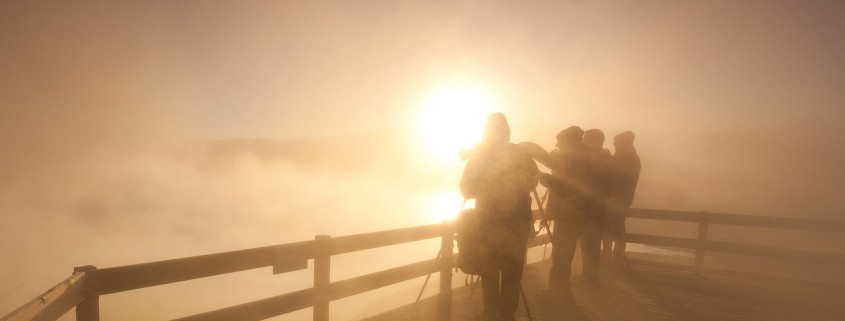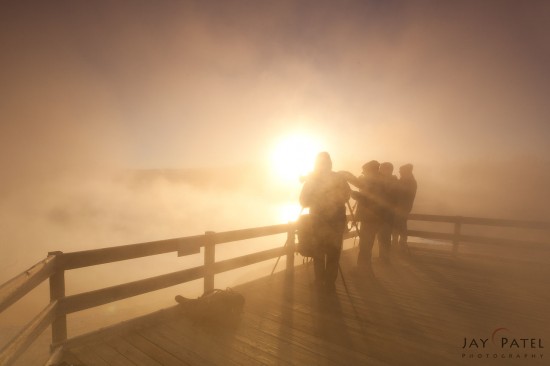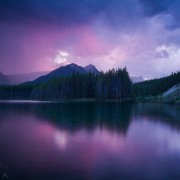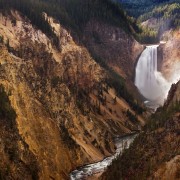How to Evoke Emotion with Landscape Photography
Travel and landscape photography have always been hobbies of mine, even at an early age. I was born in England and lived in Austria and Yugoslavia before finally coming to Canada with my parents. All of this travelling gave me an appetite for travel and adventure at a very young age. Then over the course of a number of years, I became interested in landscape photography. Having worked with Canon Canada as national manager of large format printing, I had the opportunity to travel much of Canada and USA and photograph different parts of these countries. Whenever I had vacation time, I would travel to other destinations further away. Iceland, Italy, Spain, Portugal, Israel, and the Caribbean being some of my favorites.
Emotional Impact of Landscape Photography
A landscape photo can have a profound emotional impact on the person viewing it. This ability to evoke emotion is one thing that makes a photo great. Landscape photography is very much about seeing into the soul of a place.
When we begin to study photography, we learn that compositional techniques can make our images more pleasing to the eye and more quickly understood. But there’s more to it than just the rules of photography composition. All of these techniques are certainly valuable and create a good starting place, but the key to great photography is to engage your viewers. For them to look more deeply into your images and have a moment of discovery that makes them want to climb into your frame and explore the inside for themselves. Creating emotion with your nature photography takes a little bit of time and patience and learning to see things in a new way.
In all my years of photographing landscapes, I have been on a path of constant learning. And it’s not just about “practice makes perfect” in the sense of shooting thousands of photos. It’s about developing a story that draws your viewer into your frame. It engages your viewer emotionally and draws them into with your artistic expression. Landscape photography composition allows you to express your artistic viewpoint and vision (rather than just taking a “Happy Snap” as my Sheridan College professor used to say.) For me, the mark of a truly great landscape photo is one which stirs the emotions.
Tips to Evoke Emotion
#1: Developing Your Style
Everyone sees the world in their own unique way and that’s the foundation of developing your own personal style. Style is like a fingerprint – it’s the personal aspect that makes your landscape photography uniquely you. It’s important to find your style and continue to develop it, not just for your personal taste, but for helping your work stand out in the crowd. Examples of personal style may be that you concentrate on landscapes, street photography, or maybe macro photography. It might be that all your photos have a certain coloring style that defines them. The use of lighting may be a unique feature or perhaps it’s how you arrange the elements within the frame.
Some photographers use black and white landscape photography to evoke emotions with form and textures. It takes a while to develop your own style, but it should express something about who you are.
#2: Capture the Mood and Drama
Have you ever taken a photo and felt the thrill that you captured something special? You have a sense that you’ve uncovered a moment in time and captured it in a state of emotional euphoria. These moments can often be fleeting. Imagine a streak of light shooting out from an opening in the sky to illuminate a gorgeous valley in front you… and then vanishing as quickly as it appeared.
Look for unusual weather patterns, seasonal changes, and light to capture mood and drama in your landscape photography. When these opportunists present themselves, you must be ready to take advantage of it. Capturing mood and drama may require you to bracket your photos, so capture the details in the darkest shadows and the brightest highlights.
#3: Minimalist Landscape Photography
I love storytelling images filled with emotional details, yet it’s often a simple uncluttered photo that has a strong emotional impact. Such is the evocative power of minimalistic landscape photography. Keeping it simple doesn’t mean it has to be boring. It’s all about careful observation and capturing the moment.
Minimalist landscape photography can present its own challenge. Because the photo frame contains a lot of negative space, it’s important to think about the nature of your subject and how its relevance in the frame creates an emotional impact. This is especially true for wide angle landscape photography. Long exposure, shallow depth of field, selective focus, and telephoto lenses are some of the ways to capture minimalist landscape photography.
#4: Use a Human Element to Evoke Emotion
When you think about landscape photography, you most likely think about wonderful sunsets, shimmering lakes, and sweeping vistas. But in order to have an engaging photograph, it must connect with its viewers on some emotional level. It could be any range of human emotions, but there needs to be an emotion attached to the image. If the viewer feels like they could step right into the scene and want to be there, then you have an engaging photo. You don’t always need people in your landscape photos, but often it helps.
People, birds, and wildlife can be used to evoke emotions to your photos. I love to get people into the shot, not as the main subject, but to give the photo a sense of scale and emotion. A cliff jutting out into the lake or ocean becomes so much more meaningful if a person just happens to be standing on the cliff. It creates a feeling of awe and contemplation and tells a story.
#5: Research and Preparation
Ansel Adam once said that “There is nothing worse than a sharp image of a fuzzy concept.” I think what has changed my photography most over the years is the focus I put on planning and preparing ahead of time. Research is critical to creating a great photo. To be at the right place at the right time takes a lot of prep work. Sometimes you might get lucky when shooting and serendipity comes into play, but it’s better to start with a vision already in your mind.
Google Maps is very helpful for photographers to scout out locations. The 3D renditions of the earth surface are very helpful. The Photographer’s Ephemeris (TPE) is also a great app to plan outdoor photography shoots. TPE is a map-centric sun and moon calculator that lets you see how the light will fall on the land, be it day or night, for almost anywhere on earth. Once I know the location that I want to explore, I use google research to find images of the area. Once you know the location you want to shoot, finding the right light is fundamental to evoking emotions in your landscape photos. Think about what kind of light best fits with that landscape location and make a plan to return to the scene when the light is right.
#6: Post-Processing
Photography is a bit like an art medium and the RAW photo files are like a canvas upon which you paint. In essence, you become a digital painter where post-processing plays an essential part. Good post-processing can bring out the character and emotions of a landscape transforming a good photo into a great one. Post-processing also allows you to merge different images together to achieve desired sharpness, correct exposure, and more. So, it’s important to know how to edit your images once you get them home.
It’s not within the scope of this article to explain all the techniques that can be used in either Photoshop or Lightroom software programs, but one plug-in set I love to use is the NIK Collection by DxO. The Nik Collection is a suite of eight powerful photo-editing plug-ins for Adobe Photoshop and Lightroom that helps photographers take their images to the next level. Easy to use effects and great black and white conversions allow for fabulous mood effects.
Learn to build your own style and vision. In a way, my life has become my photographic style. Wherever I go, I automatically think of what can I capture that is unique in this area, whether it be landscape photography or aerial photography with my drone. Hopefully this article helps you to build on and refine your own photographic identity and bring out the emotion that draws viewers.


















